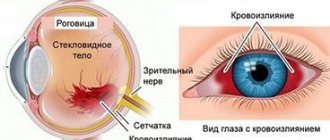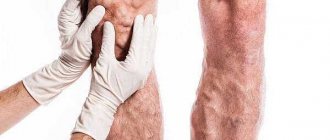Sometimes we experience a special kind of discomfort - it seems that either our head or our eyes hurt. This pain occurs in the sinus area or at the back of the eye. Sometimes it is pulsating, sometimes it is constant. This condition frightens us very much and we want to know what causes this pain? What can be done to alleviate it? Could there be something wrong with my vision?
Let's first answer the last question.
Scientists from the American Academy of Ophthalmology defined "eye pain" as "physical discomfort caused by an eye or other disease." But scientists emphasize that “the location of the pain does not necessarily indicate the cause of the pain.”
In most cases, the cause of a headache felt in the eyes may be hidden in a completely different place. We feel pain in this particular location because of a network of interconnected sensory nerves that penetrate all tissues of the body.
“Almost every pain-sensitive structure in the head transmits the sensation of pain to the eye area,” says Dr. Mark W. Green, MD, professor of neurology at the Icahn School of Medicine at Mount Sinai Hospital in New York City. “Just because the eye hurts does not mean that the problem is in the eye itself. In fact, this happens quite rarely."
Green advises to remember one useful rule: if the white part of the eye (sclera) is not red, and there are no complaints about vision - a blurred or distorted picture, it is very unlikely that the headache is associated with the eyes themselves.
Causes
The most common reasons:
- Glaucoma. This disease is associated with increased intraocular pressure. The development of pathology is accompanied by pressing pain in the eye. The list of typical symptoms also includes fog before the eyes, a sharp decrease in visual acuity, and sometimes nausea. Glaucoma progresses quickly, so you should consult an ophthalmologist as early as possible.
- Neuritis is inflammation of a nerve. In the case of pain in the eye, the pathological process affects the optic nerve. Discomfort increases with eye movement. More often, neuritis develops against the background of infection.
- Inflammation of the iris. Painful sensations are usually accompanied by photophobia.
- Migraine. The pain is accompanied by loss of part of the visual field. After the attack ends, vision is restored.
- Eye injury.
There are also reasons not related to the function of the eye: for example, sinusitis and increased intracranial pressure.
Sinusitis is an inflammation of the paranasal sinuses. If it affects the upper sinuses, the headache may spread to the eyes. As a rule, the development of the disease is accompanied by an increase in temperature and a deterioration in general well-being.
Increased intracranial pressure can be chronic (due to vascular diseases), as well as acute (occurs due to head injuries or the development of infectious diseases).
In some cases, pressing pain in the eyes may appear due to visual fatigue. This often happens after working at the computer for a long time or with small print, or when working in insufficient lighting. In such cases, it is necessary to ensure working conditions that comply with visual hygiene recommendations. Set up a comfortable computer brightness, color scheme, and ensure adequate lighting of the workplace.
Diagnostic and treatment methods
Treatment methods are selected individually. Only an experienced doctor will be able to determine the causes of headaches and prescribe the most effective treatment regimen. The Clinical Brain Institute specializes in the diagnosis and treatment of such disorders, and also offers individual rehabilitation programs. The examination includes several stages. The first of them will require a general examination by a therapist and an ophthalmologist; then, if necessary, additional procedures may be prescribed:
- encephalography - study of the state of the brain;
- radiography and ultrasound;
- MRI of the head is the most informative diagnostic method;
- blood tests - prescribed if infectious diseases are suspected.
In our clinic you can sign up for a consultation with specialized specialists who practice treating headaches in patients of any age. Treatment in most cases is medicinal and may include taking antibiotics, anti-inflammatory and painkillers, drugs to improve blood circulation in the brain, as well as eye ointments and drops.
Intraocular hypertension and glaucoma
Intraocular hypertension is a pathological increase in intraocular pressure. The pressure that the intraocular fluid and vitreous body exert on the membranes of the eyeball. It can only be measured at an appointment with an ophthalmologist.
At CELT you can get advice from an ophthalmologist.
- Initial consultation – 3,900
- Repeated consultation – 2,000
Make an appointment
Temporary increases in blood pressure can be caused by drinking alcohol, smoking, or eye strain. If the sensation of pain does not go away for a long time, then this is a symptom of glaucoma - one of the most common and dangerous diseases. It manifests itself as a decrease in visual acuity and over time can lead to complete blindness.
The insidiousness of glaucoma is that it develops gradually: in the first stages, a slight pressing pain may be the only symptom. The disease develops at any age, but most often in older people.
Headache in the eye and forehead area - causes
It will probably be difficult to find at least one person who has never experienced a sometimes simply unpleasant, and at times unbearable headache. The most common type of this disease is pressure in the front of the skull - the forehead and eyes.
Classification of headaches
There are several types of pain affecting the forehead and eye area:
- Paranasal sinuses – painful sensations in the forehead area, spreading to the cheekbones;
- Cluster pain - this term refers to pain affecting the eyes;
- Tension type - this pain is characterized by squeezing sensations around the entire head;
- Migraine is one of the most painful types, characterized not only by painful sensations, but also often by nausea and vision problems.
What can cause forehead and eye pain?
Most often, a severe headache is not the disease itself, but only its symptom. But there are a great many diseases themselves and other causes that cause pain in the head; let’s look at the main ones:
- Stress is the most common cause of these types of pain. Very often, people who are constantly exposed to emotional stress at work complain of throbbing pain in the temples and forehead.
- Food intoxication - poisoning with low-quality and expired food products can also cause headaches. This also includes the impact on the body of all sorts of harmful substances added to products by unscrupulous manufacturers.
- Poisoning by toxic fumes - toxic substances surround us everywhere and can be a real cause of headaches when staying in close proximity to the source for a long time.
- Hangover syndrome – the consequences of alcohol abuse are accompanied by high blood pressure, dehydration, and as a result – headaches in the forehead and eyes.
- Hormonal background - this point concerns mainly women and the state of their hormones. They may suffer from headaches during pregnancy, menstruation or menopause.
Illness as a cause of headache
All the reasons described above are very general, and anyone can encounter them. Below we will look at what specific disorders of the body can cause a headache in the front part of the skull.
- Almost all diseases from the otolaryngology section (ear, throat, nose) - inflammation in these organs leads to constant headaches;
- Various eye diseases - unfortunately, pain and a feeling of pressure in the eyes can be the cause of any disorders occurring in the organs of vision. Most often, of course, your eyes may hurt due to banal overwork, but if the pain bothers you regularly, then this may be a reason to contact a specialist.
- Benign and malignant tumors - the most serious probable cause of headaches is oncology. Neoplasms can arise in the brain itself - although this disease is rare, it often ends in death due to the fact that the disease is simply in an advanced state.
- Essential hypertension (hypertension) - in this vein, we can talk about both a chronic disease accompanied by a constant increase in blood pressure, and a common predisposition to pressure surges due to weather changes, stress, fatigue, etc. Painful sensations with increased blood pressure are unpredictable and can be concentrated in the temples, forehead, and back of the head, and sometimes cover the entire head.
- Infectious diseases - such as meningitis (pain in the head, eyes and neck is the main symptom of meningitis), malaria, fever, flu, typhoid. The course of the above diseases is accompanied by severe pain in all areas of the head. But do not forget that all these ailments are accompanied by a number of other serious symptoms, so before attributing any disease to yourself, listen carefully to your body.
Author: K.M.N., Academician of the Russian Academy of Medical Sciences M.A. Bobyr
Treatment
Before prescribing treatment, the ophthalmologist will conduct an examination and make a diagnosis. As a rule, the main stages are measuring intraocular pressure, examining the fundus, and examining with a slit lamp. This set of examinations allows you to identify the main and most common eye diseases.
In the case of glaucoma, special medications will need to be dripped into the eyes to reduce intraocular pressure. In most cases, you will need to prepare for surgery - glaucoma does not respond to conservative treatment.
If the pain is caused by an inflammatory disease, then you will need to identify the pathogen and start taking appropriate medications: antibacterial or antiviral.
Treatment for pain caused by fatigue involves following basic visual hygiene recommendations. The patient will have to be more attentive to his health. This pathology is most often found among office workers, and it has even been called visual fatigue syndrome. An ophthalmologist may prescribe eye exercises and recommend coming for preventive examinations.
When to see a doctor if you have eye pain
If your eyes hurt, you cannot do without medical advice. This is necessary to make a diagnosis and begin proper treatment.
Sometimes the cause of pain in the eye is immediately clear (for example, when pain occurs as a result of a foreign body entering the eye), but in most cases it is necessary for the diagnosis to be made by a specialist - an ophthalmologist.
It should be remembered that pain in the eye can mean the threat of a sharp deterioration or even loss of vision.
You should definitely consult a doctor if:
- foreign body getting into the eye;
- bruise in the eye area;
- dull pain in the eye lasting more than two days;
- sharp, piercing pain in the eye;
- pain in the eye accompanied by blurred vision;
- pain in the eye, accompanied by symptoms such as nausea, vomiting, increased sensitivity to light.
If a child’s eyes hurt, he should definitely be shown to a pediatric ophthalmologist.
Our services in ophthalmology
The administration of CELT JSC regularly updates the price list posted on the clinic’s website. However, in order to avoid possible misunderstandings, we ask you to clarify the cost of services by phone: +7
| Service name | Price in rubles |
| Pneumotonometry | 500 |
| Tonometry (according to Maklakov) | 1 000 |
| Goldmann tonometry (Icare tonometer) | 1 000 |
| MSCT of orbits | 7 000 |
All services
Make an appointment through the application or by calling +7 +7 We work every day:
- Monday—Friday: 8.00—20.00
- Saturday: 8.00–18.00
- Sunday is a day off
The nearest metro and MCC stations to the clinic:
- Highway of Enthusiasts or Perovo
- Partisan
- Enthusiast Highway
Driving directions
Prevention of eye pain
There are no specific uniform measures to prevent eye pain, since the causes of its occurrence are diverse. To reduce the risk of their occurrence, ophthalmologists advise regular follow-up with them, as well as with doctors of other specializations. The risk of abnormalities that provoke intraocular pain can be reduced by following the general principles of a healthy lifestyle, personal hygiene, and visual hygiene:
- periodically give your eyes rest;
- Use eye protection when working with chemicals, working in contaminated areas or in bright light;
- systematically perform eye exercises;
- use prescription glasses for working with documents and watching TV if you have visual impairments;
- monitor the light level when working with documents, etc.
Patients of any age should consult a doctor immediately after the first unpleasant symptoms appear. This will allow the ophthalmologist to detect the source of the malaise in time and eliminate the problem at an early stage.
Prevention
It is worth noting! As a preventive measure, you need to reconsider your lifestyle, limit bad habits, get enough sleep, not overwork, and sit less at the computer.
Regular eye exercises are recommended Outdoor walks are recommended .
Good results with frequent but not very severe discomfort are achieved by
yoga classes and massage of the head, shoulders, neck, proper nutrition and drinking regime .
Such methods will allow you to avoid illness due to overexertion and the like, but will not eliminate the risk of other diseases that require medical intervention.
Useful video
This video shows what to do if you have a headache in the forehead and temples:
Obviously, a headache that radiates to the eyes is a very common symptom , which is why most people are familiar with it firsthand.
Despite its commonness, it is unacceptable to neglect the condition . Perhaps the cause of the malaise is harmless, but it may also indicate serious disorders.
If there are no reasons for the pain in the form of stress and lack of sleep , and it does not go away on its own, you should immediately consult a specialist , forgetting about self-diagnosis and self-medication.
Methods for reducing pressure
Before starting treatment, it is necessary to undergo modern diagnostics and determine the cause of the pathology. Drug therapy is selected individually, taking into account the patient’s condition. As a rule, the following types of drugs are prescribed:
- beta blockers - to reduce the amount of intraocular fluid;
- prostaglandins – means for normalizing fluid circulation and improving its outflow;
- Cholinomimetics - drugs for constricting the pupil;
- carbanhydrase inhibitors - agents that normalize the production of ocular fluid;
- neuroprotectors and combination drugs.
Patients who want to learn how to lower eye pressure should not self-medicate or prescribe medications to themselves. Many of them have a number of contraindications and in some cases can cause side effects. Some patients experience pain and burning in the eye area, swelling of the mucous membranes develops, changes in the color of the cornea, and the risk of developing cardiac pathologies and bronchial spasm increases. The choice of medications and their dosage should be entrusted exclusively to the attending physician.
Drugs to reduce eye pressure are available in the form of drops. Most of them have an immediate effect and give a relief result 2-3 hours after instillation. As a rule, the funds are instilled 1-2 times a day. It is better to do this in the evening.
For oral administration, medications may be prescribed in tablet form. However, such drugs are less effective than drops and give a positive result only at the initial stage of the disease.
As an additional method of reducing eye pressure, as part of a comprehensive treatment, special eye exercises should be performed. The exercises can be done independently, at home. However, their effectiveness can be discussed only if the pressure indicators slightly deviate from the norm. It is impossible to cure glaucoma with visual gymnastics.









